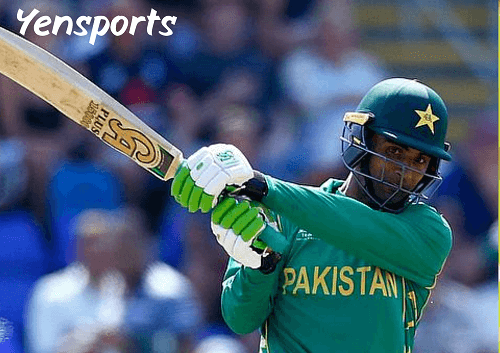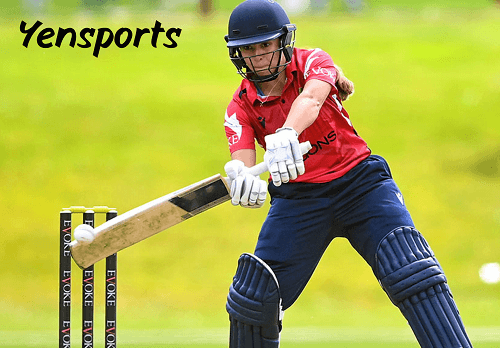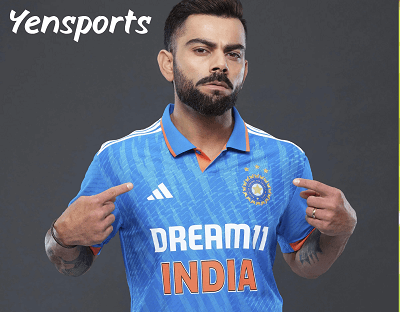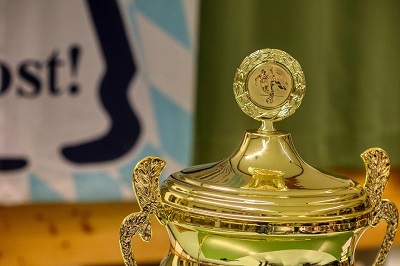Cricket Attires: Necessary Kit for Performance and Comfort
Cricket is one of the most popular games played around the world and has millions of players and cricket fans across all continents. It is a game of skill and strategy that requires high levels of physical agility and mental precision. Therefore, the player must be fully prepared for this game. Cricket Garments The most important aspect of a cricket uniform is the clothing worn by the players. Cricket clothing is not only designed to provide comfort and freedom of movement but also safety from injuries. In this article, Cricket Garments will discuss the types of cricket uniforms, their materials, and their role in enhancing a player’s performance.

Types of Cricket Garments:
Two major categories of cricket attire exist protective wear and non-protective wear. While the latter is comfortable and performance-oriented, the former is to protect the player from injuries, particularly during high-intensity actions like facing fast bowlers or fielding near the batsman.
1. Cricket Attire (Non-Protective):
- Shirts and T-Shirts: Cricket shirts are made from breathable, moisture-wicking fabrics like polyester or a cotton blend. This fabric keeps the players cool and dry in hot weather during long innings. The shirt is loose-fitting, enabling free movement of the arms, and allowing the player to comfortably bat, bowl, or field.
- Pants and Trousers: Cricket pants are comfortable and flexible. They have lightweight, stretchable fabric that allows the player to move freely when batting, bowling, or fielding. The trousers also feature reinforced areas around the knees and crotch for added durability and comfort in extended use.
- Jackets and Sweaters: In colder climatic conditions, cricket players use jackets, sweaters, or vests made from moisture-wicking insulating material. These clothes maintain the player’s body temperature and give them comfort and free mobility.
- Caps, Hats, and Sun Protection: Cricket caps, wide-brimmed hats, and visors are the most common accessories worn by players to protect themselves from the scorching sun. Cricket caps are made of cotton or polyester and are usually a cool, lightweight option for protecting the face and eyes from the sun’s rays.
- Socks and Shoes: Cricket socks are usually long and support the lower leg. They also provide moisture absorption and ventilation. Shoes are made from synthetic leather and rubber, providing grip and support while running. Thus, players can perform at their best.
2. Protective Garments:

- Leg Pads: These are guards in protection of the lower part of the legs that impact either from fast bowling or general close fielding where delivery might hit these. Traditionally, high-density foams or any pad-made material is applied such that it is as lightweight while at the same time proving to be highly effective, as they cushioned through the shin and thigh kneel areas.
- Gloves: These are the gloves used by cricketers to prevent impact on hands and fingers while playing, which provides flexibility to them. Gloves are padded but light so that they will not disturb the grip of a player. Batting gloves are worn for cushioning the hands when holding the bat, whereas wicketkeeping gloves are made with more finger protection in them.
- Helmet: The helmet is probably the most critical piece of protective equipment used in cricket, especially for batsmen and wicketkeepers. Modern cricket helmets have a hard shell manufactured from lightweight materials such as carbon fiber or fiberglass with a faceguard to protect the face from fast deliveries and bouncers. Some neck protection is also available.
- Box (Abdominal Guard): It is a protective cup that is worn by players for the protection of the groin area from injury. The box is worn inside the shorts or trousers. For batsmen and wicketkeepers, it is quite important because they are exposed to more impact in this area.
- Arm and Thigh Guards: These are the wearables to protect the forearms, elbows, and thighs. The players usually wear them to avoid bruises and cuts while playing on the field or batting.
Importance of Cricket Garments:
Cricket uniforms are manufactured with many key considerations in mind. Comfort is paramount as players must perform in a variety of physical conditions, from long innings to fast pitches. Protection is very important, especially against hard cricket balls traveling at high speeds. Protective clothing, if worn correctly, minimizes the chance of serious injury, making the game safer for players. Breathability and moisture management are important features of cricket clothing. Cricket matches typically last for several hours. Therefore, clothing must be able to absorb sweat and keep the player cool and dry.
FAQs About Cricket Garments:
1. What material are cricket garments made of?
Cricket garments are made of cotton, polyester, spandex, and nylon. The materials used are lightweight, breathable, and moisture-wicking, so the player remains comfortable during a long match. Some of them also have padding made of foam or gel for added protection.
2. Why do cricketers wear white clothing?
Traditionally, cricket players wore white clothing as part of the game’s heritage. White clothing is also practical, as it reflects sunlight, helping to keep players cooler. Today, while colored clothing is common in limited-overs formats, white remains the standard for Test cricket.
3 . What is the function of a cricket box?
The cricket box, also known as an abdominal guard, is a protective cup worn by batsmen and wicket-keepers to protect the groin against potential injury from impact ball. It is a small, hard plastic or metal guard placed inside the shorts.
4 . Do cricket helmets have specific standards?
Yes, modern cricket helmets must meet safety standards set by organizations such as the International Cricket Council (ICC) and the British Standards Institution (BSI). Helmets must undergo rigorous testing for impact resistance to ensure maximum safety for players.
5. The fit of cricket gloves should be tight but not too tight .ht?
This allows players to grip the bat firmly and also provides enough protection for their hands. Batting gloves are padded across the palms and fingers to absorb shocks, while wicketkeeping gloves have additional padding for protecting the fingers and palms in close play.
Conclusion:

Cricket equipment plays an important role in enhancing the performance, comfort, and safety of the player. This can include comfortable jerseys and pants that do not restrict the player’s movement, padded gloves that protect the player’s hands from impact, shin guards that protect their feet,t and helmets that slowly protect their heads. This allows the player to understand what type of clothing to use for what type of activity and thus choose the most suitable equipment that will give them the best performance anminimizese the chances of injury.

